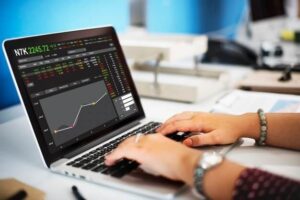sundry creditors in balance sheet: Providing financial particulars in ITR 4 Sugam
Содержание
All the purchases need to be tracked efficiently to maintain smooth functioning of a business organisation. Give TallyPrime a free trial today and check out its amazing capabilities that help you keep your payables steady. The reason accounts payables are critical is slow or delayed payment may create ill-feeling and the supplies could be disrupted and also impacts the credibility of the business. The way you manage your accounts payable has a direct impact on cash flow and therefore it should be managed carefully to enhance the cash position. Debtors and creditors play a crucial role in shaping a business’ hold in its line of work. In any business transaction, there is buying and selling of goods/services involved.

If depreciation expense is known, capital expenditure can be calculated and included as a cash outflow under cash flow from investing in the cash flow statement. Accounts Payables, or AP, is the amount a company owes suppliers for items or services purchased on credit. As the company pays off its AP, it decreases along with an equal amount decrease to the cash account.
Example & Treatment in the Balance Sheet
Intangible assets like Goodwill should be included in fixed assets only if they have been purchased . All assets other than Current Assets are included under the head Fixed Assets. Since prepaid expenses are not recovered in cash but are written off as expenses in the future, they are considered to be a part of Current Assets other than Liquid Assets.

An analyst can generally use the balance sheet to calculate a lot of financial ratios that help determine how well a company is performing, how liquid or solvent a company is, and how efficient it is. The most liquid of all assets, cash, appears on the first line of the balance sheet. Companies will generally disclose what equivalents it includes in the footnotes to the balance sheet. E.g. The above purchase will be recorded as follows in the books of PQR since Company C is a sundry creditor. Sundry debtors total will be shown under CL and Sundry Creditors under CA, prepaid creditors are Current Assets, and prepaid debtors are Current Liabilities, they get classified under groups accordingly.
Summary – Sundry Debtors vs Sundry Creditors
I resolved it by deleting the payments attached to those Bills and then picking them back up from the banking feed and it has resolved it. More liquid accounts, such as Inventory, Cash, and Trades Payables, are placed in the current section before illiquid accounts (or non-current) such as Plant, Property, and Equipment (PP&E) and Long-Term Debt. Sundry Payables on the other hand includes Suppliers of goods and services that are required on ONE-TIME Basis without any expected reccurring transactions with the Organization. Taxable income is the portion of your gross income used to calculate how much tax you owe in a given tax year.
In any case, the “advances from customers” have been absorbed and offered as income in the subsequent years when the respective projects relating to the advance received from the customers, have been completed. Pr.CIT has alleged that the AO has failed to make necessary verification and inquiry before passing the assessment order and he has failed to consider the issue of sundry creditors in proper perspective. Pr.CIT goes on to hold that the assessee was not confronted on the issue to reach a logical conclusion. We failed to understand what is the logical conclusion that the Pr.CIT desired the AO to reach.
Operating income is a company’s profit after deducting operating expenses such as wages, depreciation, and cost of goods sold. Sundry income is often irregular and not a guaranteed source of company income over the long term. Account payable to Gunjan Traders is is a liability to S Enterprises. As per the golden rules of accounting, Sundry Creditor A/c is a personal account. Unlike, Creditors who belong to the liabilities, Debtors are a part of assets.
- Balance sheet is one of the important financial statement used for making business decisions.
- When the debtor who owes the firm money doesn’t pay on time, it may disrupt the harmony between the contracting parties.
- The simple meaning of accounts payable is that you owe the firm an amount of money whenever you buy services or goods from an organisation.
- The credit entries relating to discounts, returns, rebates etc., made in the suppliers’ accounts are to be verified with the statement of accounts obtained from them.
When a company is first formed, shareholders will typically put in cash. For example, an investor starts a company and seeds it with $10M. Cash rises by $10M, and Share Capital rises by $10M, balancing out the balance sheet. This account may or may not be lumped together with the above account, Current Debt. While they may seem similar, the current portion of long-term debt is specifically the portion due within this year of a piece of debt that has a maturity of more than one year. For example, if a company takes on a bank loan to be paid off in 5-years, this account will include the portion of that loan due in the next year.
If taxpayer has not made payment to creditors, from whom they purchased the Goods within period of 180 days than taxpayer is required to reverse the Input tax credit which taken earlier in GST return. On the income statement or balance sheet, sundry income may also be listed as miscellaneous income or other operating income. Sundry creditors mean you owe your creditors money and have availed interest-free credit from them.
What is included in the balance sheet?
Sundry Debtors are those persons or firms to whom goods have been sold or services rendered on credit and the payment has not been received from them. In other words, Debtors are the persons or firms from whom the payment is to be received by the business. As a result, such transactions usually lead to the addition of a debtor & a creditor in the books of the seller and buyer, respectively. Suppose “Daniel Constructions” sold building material worth 60,000 to “Axis Housing” on credit, and Axis Housing agrees to pay the related invoices in the future accounting period.

If the company sells these assets, it will record the resulting income as sundry or miscellaneous income on its income statement. Sundry income may include income from a variety of sources, the nature of which may change from one accounting period to the next. For example, late fees, royalties, profits on the sales of minor assets, or foreign exchange gains may qualify as sundry income depending on the nature of the business involved. Income from sources such as interest may be included in sundry income depending on whether a company has substantial interest income due to large cash balances.
Manage cookies
These do not include prepaid expenses since they are not recovered in cash but are written off as expenses in the future. Leverage – Looking at how a company is financed indicates how much leverage it has, which in turn indicates how much financial risk the company is taking. Comparing debt to equity and debt to total capital are common ways of assessing leverage on the balance sheet.
Key Difference – Sundry Debtors vs Sundry Creditors
The sundry creditors in balance sheets outstanding for a long period is to be probed and reasons for the same are to be found out. You are not required to disclose your personal assets in the ITR-4. Only assets held for business purpose are required to be shown in the ITR-4. You can show Nil value in respect of Sundry Creditors, Inventories, Sundry Debtors, Cash in hand etc. There will be no error on validation and you can file your return.
The company has purchased goods on credit and payments are yet to be made to them. Sundry creditors, also known as ‘sundry payables’ refer to a company’s suppliers from whom the company rarely make purchases on credit and the amounts purchased from them are not significant. Any person who supplies the goods or services or consumable items to a business firm on credit basis, will be called as sundry creditor by the firm who avails this facility. The suppliers of various items relating to expenses on credit basis, are also called sundry creditors.
These billed amounts, if paid on credit, are entered in the accounts payable module of a company’s accounting software, after which they appear in the accounts payable aging report until they are paid. Any amounts owed to suppliers that are immediately paid in cash are not considered to be trade payables, since they are no longer a liability. By tracking the accounts payable, you are using the credit facilities at zero interest rates and paying the due amounts later.
Thus it can be said that, accumulated losses are financed by owned capital. We can also say that owned Capital is wholly or partly supported by accumulated losses. There may be certain instances when special reserves are created out of profits and assets belonging to them are specifically set aside in the form of Fund Assets. Certain liability side items like Reserve for Taxation, Reserve for Dividends, etc., are capable of being treated either as Current Liabilities or as a part of Reserves (Non-Current). 2) In case of calculating ‘Drawing Power’ when banks providing Cash credit or Over draft facility or renewal of the same. The Structured Query Language comprises several different data types that allow it to store different types of information…
There isn’t usually much difference between them until the company runs short on money at which time the trade creditors still get paid and the sundry creditors get asked to come pick up their water cooler. It means the sundry creditors, who reflected in the taxpayer’s balance sheet, the taxpayer has be reverse the ITC or pay the equal amount of ITC along with interest and penalty as applicable. Sundry assets, frequently known as other current assets , are uncommon or insignificant things of value a company owns, such as a piece of unimproved land or restricted cash. A company may list and describe these assets in its financial statement footnotes.


Comments